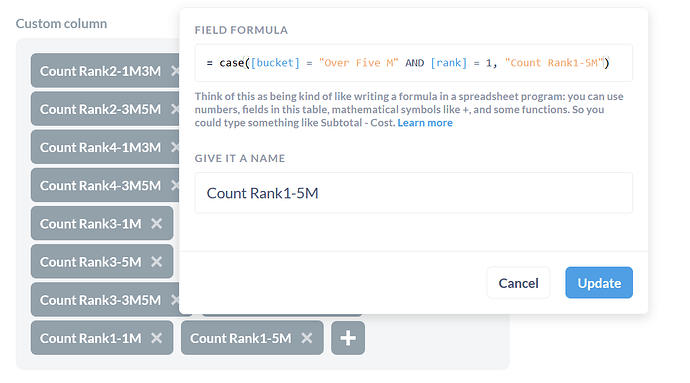I am in a situation where I have to change SQL to a GUI query builder for some reason.
I have four buckets (Below One M, Between One M Three M, Between Three M and Five M and Over 5M); inside each of the theses, I have 4 groups of rank (1, 2, 3 and 4) and I have a Count column which counted the number of times when each company were on that rank. The GUI query should show the percent of the time when the company was on the rank
Example: For each of the buckets, it calculates 20% of the time was in rank 1, 40% of the time was in rank 2, 10 % of the time was in rank 3 and 30 % in rank 4.
So my problem is I need to access the Count of each rank to calculate the percentage. I used the below line of code to have access to the corresponding value of Count for each rank. And by this, I have to add 16 new columns in the custom column to do this:
Then in the custom expression, I used them and ended up with a new 16 percent calculation like this
PercentRank1(5M)= SumIf([count], [Count Rank1-5M] = "Count Rank1-5M") / SumIf([count], [bucket] = "Over Five M")
This is very inefficient, and it gets the visualization too messy. So can you help me with this to end up with the same result that I have in the SQL, like the below table with 4 columns, not 16 columns?

